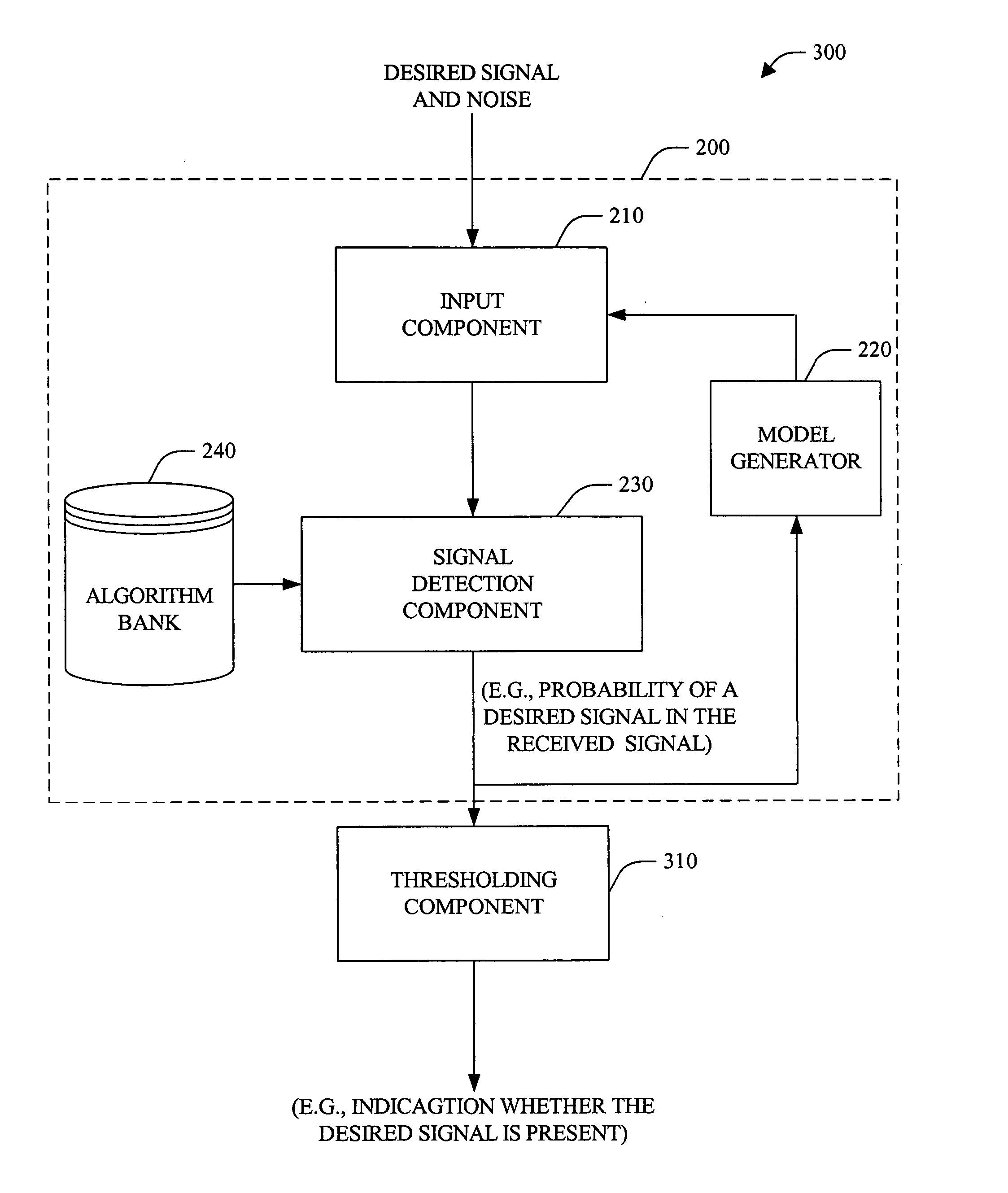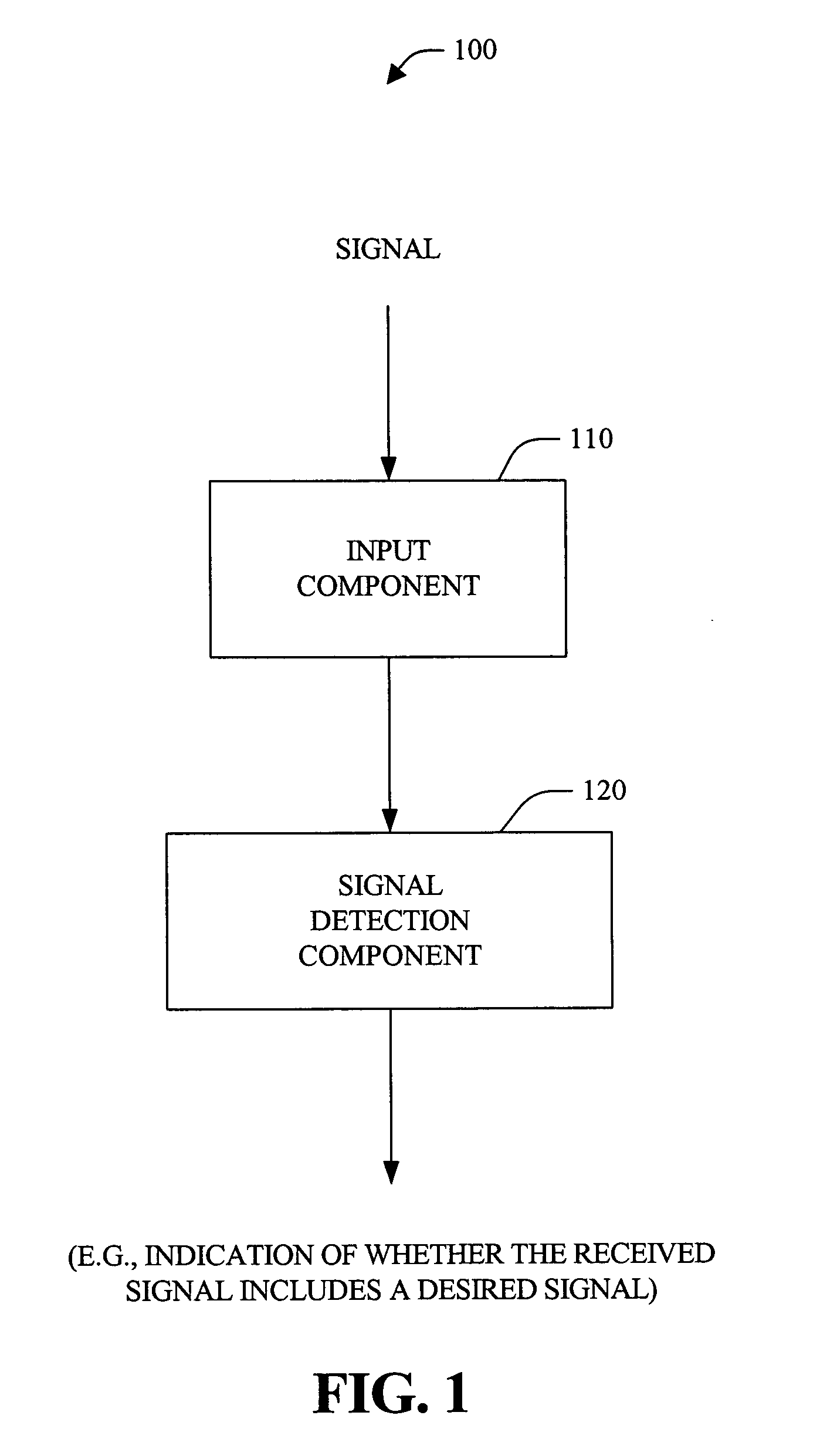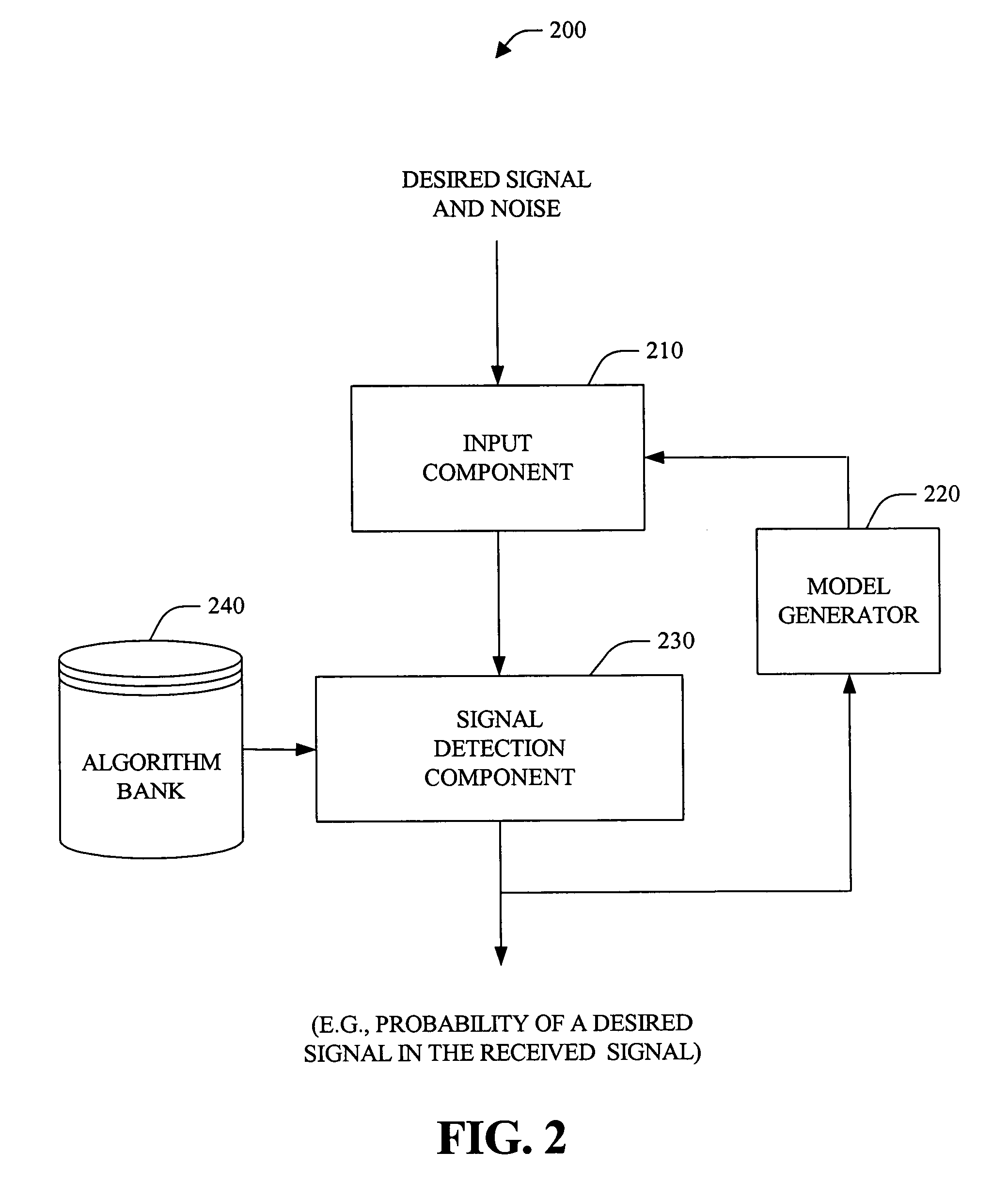Systems and methods that detect a desired signal via a linear discriminative classifier that utilizes an estimated posterior signal-to-noise ratio (SNR)
a signal-to-noise ratio and discriminative classifier technology, applied in the field of signal processing, can solve the problem of insufficient detection (e.g., presence or absence) of a desired signal, and achieve the effect of reducing the probability of false positives and false positives
- Summary
- Abstract
- Description
- Claims
- Application Information
AI Technical Summary
Benefits of technology
Problems solved by technology
Method used
Image
Examples
Embodiment Construction
[0026] The present invention provides a simple and effective solution for signal detection and enhancement. The novel systems and methods estimate a probability of a presence of a desired signal in a received signal at a frame level and / or a bin (atom) level via at least one discriminative classifier (e.g., logistic regression-based and convolutional neural network-based classifiers) and based on an estimated posterior signal-to-noise ratio (SNR) (e.g., a normalized logarithm posterior SNR (nlpSNR) and a mel-nlpSNR). The novel systems and methods can be employed to facilitate speech detection, speech recognition, speech coding, noise adaptation, speech enhancement, microphone arrays and echo-cancellation, for example.
[0027] The present invention is now described with reference to the drawings, wherein like reference numerals are used to refer to like elements throughout. In the following description, for purposes of explanation, numerous specific details are set forth in order to p...
PUM
 Login to View More
Login to View More Abstract
Description
Claims
Application Information
 Login to View More
Login to View More - R&D
- Intellectual Property
- Life Sciences
- Materials
- Tech Scout
- Unparalleled Data Quality
- Higher Quality Content
- 60% Fewer Hallucinations
Browse by: Latest US Patents, China's latest patents, Technical Efficacy Thesaurus, Application Domain, Technology Topic, Popular Technical Reports.
© 2025 PatSnap. All rights reserved.Legal|Privacy policy|Modern Slavery Act Transparency Statement|Sitemap|About US| Contact US: help@patsnap.com



